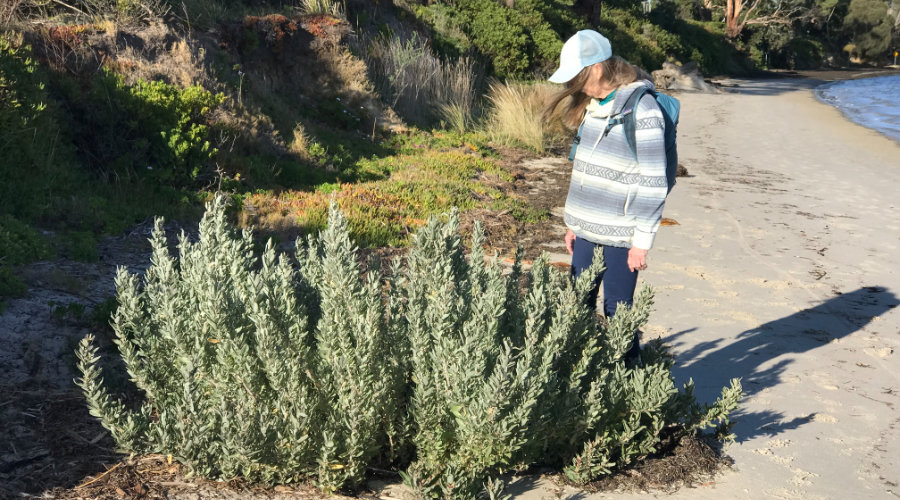Tasty saltbush
Story and photos: Russ Grayson
Common name: Saltbush.
Botanic name:
Family: Amaranthaceae
Genus: Atriplex
Species: 52 species in Australia.
Centre of diversity: Australia and other countries.
Natural habitat:
- coastal ecosystems
- dry inland Australia and overseas.
Growth form:
- perennial shrub 3m high to around 5m wide
- grey-green in leaf colour
- small grey-yellow flowers.
Useful part: leaf.
Uses:
Food:
- salt substitute
- use in salads, stir fry to add flavour
- use as a salt substitute by drying leaves and grinding
- fry leaves as potato chips
- keeps in a bag in the refrigerator for about five days; dried — keeps for around three to four months in a sealed container.
Other uses:
- screen in garden
- habitat planting
- sand dune stabilisation
- sheep, cattle browse.
Reproduction, growing:
- reproduce from seeds, cuttings
- tolerates sandy soil and salty sea spray
- wind tolerant.
Notes: stores high levels of salt in the roots and leaves.
Indigenous uses, names:
- known as Tjilyi-tjilyi to Indigenous Australians
- seeds roasted, ground to add to traditional bush bread
- Aussie Green Thumb: ash from the burned leaves used like baking soda; leaves used to treat burns and wounds.


